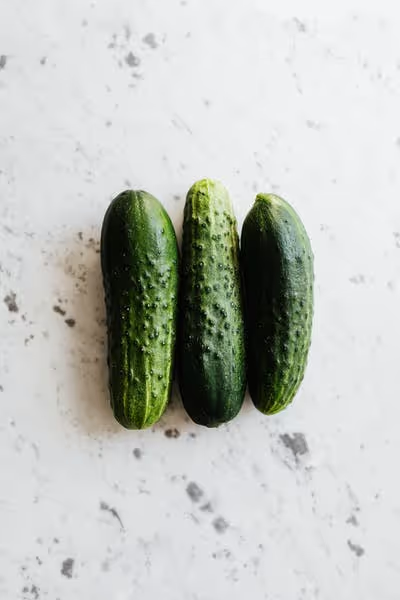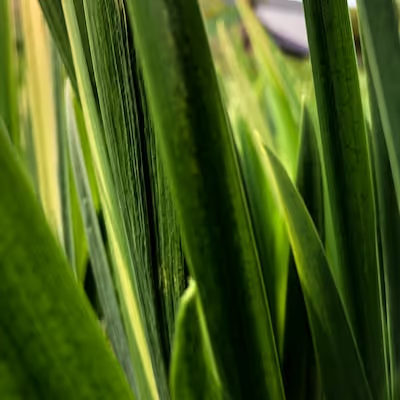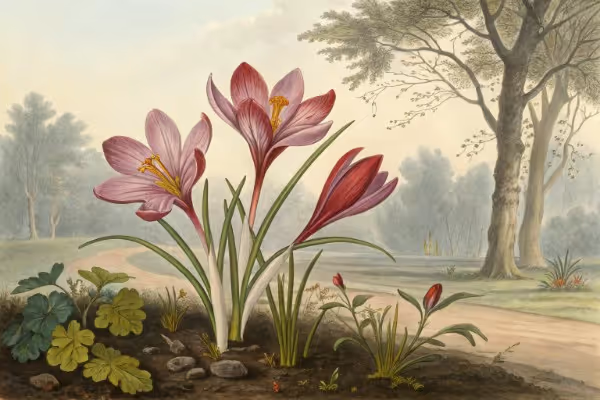Growing Turkey Berry: How to Grow Healthy, Productive Plants

Growing Turkey Berry
Growing Turkey Berry starts with loose, fertile soil, full sun, and frequent watering until established. Rich in nutrients and favored in global cuisines, this hardy perennial quickly rewards effort with nutritious harvests. Follow a few simple planting guidelines, and you'll soon savor fresh turkey berries from your own garden.
Cheatsheet: Grow Strong Turkey Berry Plants
🌱 Site & Soil
- Pick full sun (6+ hrs daily)
- Use well-drained loam, pH 6–7
- Add aged compost before planting
🌡️ Planting Steps
- Sow seeds indoors, 75–85°F (24–29°C) (8 weeks before last frost)
- Transplant sturdy seedlings outdoors after night temps stay above 60°F (16°C)
- Space 3–4 ft (90–120 cm) apart; rows 6 ft (180 cm) apart
💧 Water & Feed
- Maintain moist soil, avoid sogginess
- Mulch with straw or compost to retain moisture
- Low fertilizer needs, but boost with fish emulsion at flowering
🌾 Prune & Support
- Stake young plants for wind protection
- Prune lower leaves for airflow, reduce disease
🥗 Harvest
- Pick green clusters when firm, 90–120 days from transplant
- Best flavor before berries show yellow tinge
🦠 Pests & Solutions
- Spider mites & whiteflies: blast with water or neem oil
- Leaf miners: remove affected leaves fast
- Healthy plants resist most diseases
🍋 Nutrition & Use
- Rich in iron, calcium, antioxidants
- Boosts immune health, aids digestion
- Essential in Ghanaian, Thai, South Indian dishes
🔧 Tools and Products You'll Need
- Seed tray & potting mix
- Trowel, pruners, garden stake
- Mulch
- Organic fertilizer (optional)
- Watering can or drip system
- Neem oil (for pests)
-
Growing Turkey Berry: fast fruit, fewer regrets
Growing Turkey Berry means raising Solanum torvum, a thorny, drought-tough shrub with pea-sized clusters that cook up punchy and bitter in all the right ways.
I grow it for Thai curries, Sri Lankan mallung, and as a bulletproof rootstock for finicky eggplant, and it earns the space every season.
Plant profile at a glance
- Type: woody perennial shrub, short-lived in cooler zones.
- Climate: warm to tropical, frost kills top growth below 32 F, 0 C.
- Sun: full sun, 6 to 8 hours minimum.
- Soil: well drained loam, pH 5.5 to 6.8, moderate fertility.
- Size: 5 to 10 ft, 1.5 to 3 m, with stout thorns, so gloves are mandatory.
- Edible stage: firm green berries, before they blush yellow.
"Turkey berry is widely used as a resilient eggplant rootstock to manage bacterial wilt and root-knot nematodes," notes the World Vegetable Center, a point echoed across Asian smallholder trials.
Site and soil: set it up to sprint
I plant on a mound or raised bed to keep roots airy, then mulch thick to steady moisture and knock back weeds.
Compost at 1 to 2 inches, 2.5 to 5 cm, plus a balanced organic fertilizer at transplant keeps growth steady without lush, pest-prone shoots.
Seed, cuttings, or grafts
Seed is tiny and stubborn, so I soak 24 hours, then surface sow in a warm tray at 75 to 85 F, 24 to 29 C.
Germination takes 2 to 6 weeks, faster if you ferment the pulp off saved seed to strip inhibitors.
- Cuttings: semi-hardwood pieces 6 to 8 inches, 15 to 20 cm, root fast in sand and compost under bright shade.
- Grafting: if your endgame is disease-proof eggplant, use torvum as rootstock and cleft graft your favorite cultivar at pencil thickness.
Transplanting and spacing
Harden off for a week, then plant out after nights hold above 55 F, 13 C.
Space 3 to 4 ft, 0.9 to 1.2 m, rows 5 ft, 1.5 m, so you can dodge thorns and swing a harvest bucket without bloodshed.
Water and feeding
First month, keep soil evenly moist, then let it dry a knuckle deep between waterings to push roots down.
Side-dress with a 5-5-5 or similar every 6 weeks, or fertigate lightly if you run drip, since excess nitrogen makes lanky, spiny shoots and fewer flowers.
Training and pruning
I top the leader at 24 inches, 60 cm, to force 4 to 6 sturdy laterals that carry fruit clusters at arm’s length.
Remove basal suckers and any branches that point inward, then stake young plants to keep wind from snapping thorny whips.
Pollination and bloom rhythm
Flowers self-pollinate, but small bees double fruit set in my plots, so I leave some native bloomers nearby.
In heat, it flowers in waves, then fruits like a metronome for months.
Harvest savvy
Pick clusters while berries are firm, glossy, and green, before seeds harden and flavor turns rank.
Snip the whole raceme with pruners and a pail, since tugging barehanded invites thorn confetti and regret.
Kitchen notes from the field
I salt the berries, rinse, then simmer or pound with chiles and aromatics, which tames bitterness and keeps snap.
Never eat raw bowls of it, since glycoalkaloids live in the Solanum family and cooking is your friend.
Pests and diseases: streetwise management
- Aphids, whiteflies, and spider mites show up in dry heat, so I blast with water, then rotate neem and insecticidal soap.
- Flea beetles stipple leaves, yet plants outgrow the damage if fed well and mulched.
- Eggplant fruit and shoot borer may probe, though torvum shrugs off most serious wilt and nematode issues that flatten regular eggplant.
Clean tools, avoid waterlogged soils, and space for airflow, and you dodge 80 percent of headaches.
Safety, invasiveness, and local rules
Solanum torvum naturalizes fast, birds spread seed, and some regions list it as invasive, including parts of the Pacific and Caribbean per CABI and regional weed boards.
Contain roots with edging, harvest often, never dump fruiting prunings, and check local regulations before planting.
Containers: small footprint, big output
Use 15 to 25 gallon, 57 to 95 liter, pots with coarse, fast-draining mix, then feed little and often.
Stakes and gloves save skin, and saucers stay off to avoid wet feet.
Numbers that guide my hand
- Heat sweet spot: 70 to 90 F, 21 to 32 C, for steady flowering.
- pH range: 5.5 to 6.8, where roots take up nutrients without fuss.
- Time to first harvest: 90 to 120 days from seed, faster from cuttings.
"Fruits are used as vegetables and the plant is an important rootstock for eggplant," notes CABI’s datasheet on Solanum torvum, which also flags its weediness in wetter tropics.
Buyer’s guide and gear checklist
- Seed: look for Solanum torvum, pea eggplant, or Thai turkey berry from reputable seed houses with germination support.
- Starts: nurseries that sell eggplant rootstock often carry torvum seedlings, which transplant cleaner than home-sown trays.
- Fertilizer: balanced organic granular, plus liquid seaweed for transplant shock.
- Tools: long-cuff pruners, thick gloves, and a harvest tub you do not mind scratching.
Smart rotations and companions
I plant torvum after legumes or a cover crop to bank nitrogen, then avoid following potatoes, tomatoes, and peppers to keep solanaceous pests guessing.
Marigold and basil along the row bring beneficials and keep the place lively.
Soil health that pays dividends
Before planting, I broadfork once, add compost and coarse material for drainage, then cap with 3 inches, 7.5 cm, of wood chip mulch.
That single setup keeps water steady, suppresses weeds, and grows stronger wood that carries heavy clusters.
My field notes that might save you a season
- If seedlings sulk, your mix is too cold or too wet, increase heat and air and they wake up.
- Yellowing between veins hints at high pH, a pinch of elemental sulfur and time fixes it.
- Branch splits after storms stop once you top early and tie to two stakes, bamboo works fine.
Frequently asked questions on Growing Turkey Berry
Can I grow it from store-bought clusters? Yes, rinse, ferment the pulp 2 days, dry, then sow warm and shallow.
How long will a plant produce? In frost-free gardens it fruits most of the year, peaking in hot, wet months.
Is it safe to eat? Cook the green berries thoroughly, and avoid very ripe yellow fruit, which tastes off and holds more bitterness.
Will it cross with my eggplant? Flowers set mostly on their own, and any crossing shows up in seed, not the current season’s fruit.
Comparisons and alternatives
- Turkey berry vs garden eggplant: torvum handles poor soils, heat, and pests better, with smaller, clustered fruit and thorny wood.
- Turkey berry vs African nightshade greens: nightshade gives tender leaves, torvum gives fruit and rootstock utility.
- Best rootstocks for eggplant: S. torvum for bacterial wilt and nematodes, S. aethiopicum for vigor in cooler spots, interspecific hybrids for high-yield houses.
Postharvest and storage
Keep clusters dry and cool, 50 to 54 F, 10 to 12 C, and use within a week for snap and flavor.
Blanch and freeze if you scored a bumper crop, or pickle lightly for a sharp pantry ace.
Field-backed sources worth reading
- World Vegetable Center: eggplant rootstock notes on Solanum torvum and bacterial wilt management.
- CABI Invasive Species Compendium: Solanum torvum datasheet, distribution and weed risk.
- ECHOcommunity technical briefs: smallholder cultivation tips for tropical solanums.
- FAO and regional extension bulletins on eggplant grafting and nematode management.
Frequently Asked Questions: Essential Wisdom for Growing Turkey Berry
What soil mixture works best for Turkey Berry plants?
Turkey Berry thrives in a fertile, well-draining soil, rich in organic matter. Blend compost and aged manure into the existing garden soil. Pay close attention—soggy feet spell doom for this feisty plant, so ensure proper drainage to coax optimal growth.
How much sunlight does Turkey Berry require for optimal growth?
This bold adventurer demands full sun. Situate Turkey Berry plants where direct sunlight bathes their leaves for at least 6-8 hours daily. Skimp on sunshine, and you'll witness a lackluster yield and weak plants devoid of vigor.
What's the best watering regimen for Turkey Berry?
Water the Turkey Berry deeply yet infrequently, allowing the top inch of soil to dry between waterings. Employ a well-timed soak, carefully avoiding soggy conditions, which invite root rot and fungal foes.
Are fertilizers essential for Turkey Berry, and which are most effective?
Satisfy the hunger of your Turkey Berry with a balanced organic fertilizer, such as compost tea or fish emulsion, once a month. Go lightly; excessive nitrogen feeds leaf growth at the sacrifice of fruit production—aim for balance and restraint.
How do you manage pests that commonly attack Turkey Berry?
Stay vigilant for pests like aphids and spider mites. Combat these freeloaders naturally with insecticidal soap sprays or neem oil. Regular inspections and swift action keep your plant's defenses strong and resilient.
When and how should Turkey Berry fruits be harvested?
Harvest Turkey Berry fruits while they're young and vibrant green, approximately 70-80 days after planting. Snip carefully with sharp shears rather than pulling—preserving plant health and encouraging subsequent yields.
Can Turkey Berry be grown effectively in containers?
Absolutely—exploit the convenience of a container with ample drainage holes, at least 18 inches deep and wide, filled with rich soil. Ensure frequent watering and feedings, and grant plenty of sunlight to coax container-grown Turkey Berries into thriving productivity.
Growing Turkey Berry rewards the patient and persistent. This plant thrives in well-draining soil and full sun—give it both, and you’re halfway there. Regular pruning and a watchful eye for pests keep your crop healthy and productive. Don't forget, this tough shrub can handle less-than-perfect soil, but a little compost goes a long way. Like cauliflower or emu berry, attention to the basics pays off. Grow turkey berry for the flavor, the resilience, and the satisfaction of filling your table with what you’ve raised. It’s honest work, and the results are worth every bit of dirt under your nails.
The Homesteader's Take on Turkey Berry: Maximizing Self-Sufficiency
Self-Sustaining Perennial Benefits
Turkey Berry provides reliable perennial harvests, reducing dependency on annual plantings. Each mature shrub yields up to 5 pounds (2.3 kg) of nutrient-rich berries per growing season, supporting long-term food security.
Practical Preservation Techniques
- Drying: Oven-dry berries at 140°F (60°C) until brittle; grind for flour substitute or nutrient-dense seasoning.
- Pickling: Preserve fresh berries in vinegar brine; extends shelf life to over 12 months.
- Freezing: Flash-freeze berries on trays, transfer to airtight containers; retains nutrients for up to 9 months.
Feed and Fertilizer Alternatives
Use pruned Turkey Berry foliage as livestock fodder, providing animals with fiber and vitamins. Compost excess berries and trimmed branches into garden fertilizer, returning valuable nitrogen and potassium to soil naturally.
Medicinal Applications at Home
Traditionally utilized for digestive and anti-inflammatory benefits, dried berry powder can be incorporated into herbal tea blends or homemade salves. Do consult professional herbal guidance for precise ratios and usage.
Attracting Beneficial Wildlife
Turkey Berry shrubs attract pollinators and insect predators, enhancing biodiversity and natural pest control capabilities. Position plants strategically near vegetable gardens for optimal ecological benefit.
Find out which plants will thrive in your garden!
Answer a few fun questions and get custom plant recommendations perfect for your space. Let’s grow something amazing together!

start your season





